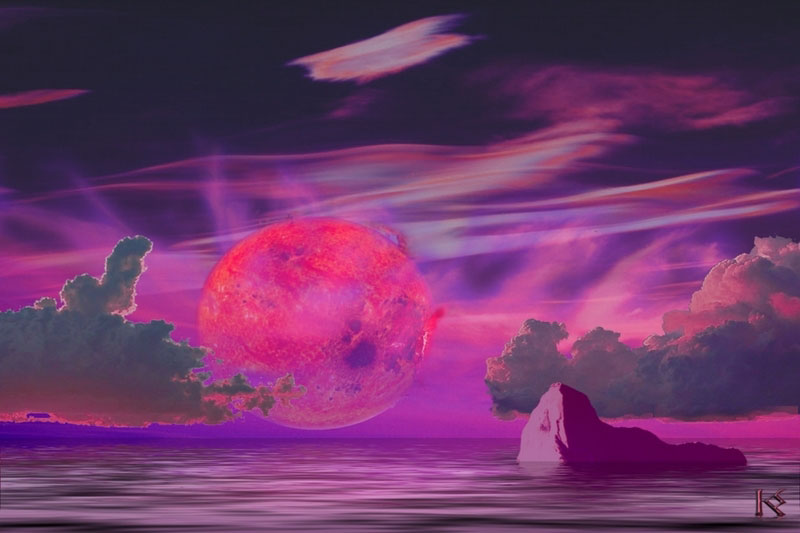
|
Credit & Copyright: Karen Wehrstein
Explanation:
How might a sunrise appear on Gliese 581c? One artistic guess is shown above.
Gliese 581c is the most
Earth-like planet
yet discovered and lies a mere 20
light-years
distant.
The central
red dwarf is small and redder than
our Sun
but one of the orbiting planets has recently been discovered to be in the
habitable zone where liquid water could exist on its surface.
Although this planet is much different from
Earth, orbiting much closer than
Mercury and containing five times the mass of Earth,
it is now a candidate to hold not only
oceans but
life
enabled by the oceans.
Were future observations to confirm liquid water,
Gliese 581c might become a worthy destination or
way station for future
interstellar travelers from Earth.
Drawn above in the hypothetical, the red dwarf star
Gliese 581
rises through clouds above a calm ocean of its planet
Gliese 581c.
|
January February March April May June July August September October November December |
| ||||||||||||||||||||||||||||||||||||||||||||||||
NASA Web Site Statements, Warnings, and Disclaimers
NASA Official: Jay Norris. Specific rights apply.
A service of: LHEA at NASA / GSFC
& Michigan Tech. U.
Based on Astronomy Picture
Of the Day
Publications with keywords: extrasolar planet
Publications with words: extrasolar planet
See also:
- APOD: 2025 September 8 Á IRAS 04302: Butterfly Disk Planet Formation
- APOD: 2024 July 8 Á Exoplanet Zoo: Other Stars
- Temperatures on Exoplanet WASP 43b
- Epsilon Tauri: Star with Planet
- APOD: 2023 October 17 Á PDS 70: Disk, Planets, and Moons
- APOD: 2023 September 20 Á Methane Discovered on Distant Exoplanet
- APOD: 2023 June 6 Á Star Eats Planet
